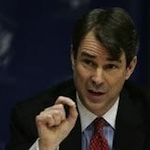Armed Conflict
Congress
Criminal Justice & the Rule of Law
Executive Branch
Foreign Relations & International Law
Terrorism & Extremism
The President's Speech: The Good, the Bad, and the Ugly
The President's speech was a dog's breakfast: some good parts, some bad parts, and some ugly parts.
The Good. The most significant part of the speech was the President's description of clearer standards for use of force against terrorists, including by drones. These standards are set forth in even greater detail in a White House fact sheet entitled "U.S.
Published by The Lawfare Institute
in Cooperation With

The President's speech was a dog's breakfast: some good parts, some bad parts, and some ugly parts.
The Good. The most significant part of the speech was the President's description of clearer standards for use of force against terrorists, including by drones. These standards are set forth in even greater detail in a White House fact sheet entitled "U.S. Policy Standards and Procedures for the Use of Force in Counterterrorism Operations Outside the United States and Areas of Active Hostilities" issued in conjunction with the speech. Together, the speech and fact sheet set forth more restrictive standards, including that the same targeting standard applies to Americans and non-Americans; that the targeted individual must pose a "continuing and imminent" threat (a higher standard than the "significant threat" previously described by John Brennan in his Wilson Center speech); that the threat must be to U.S. persons (not simply "U.S. interests"); and that there must be a "near certainty" that non-combatants will not be injured or killed. Together, these standards set a high bar for the use of drones by the United States, or by any country. In this regard, unlike Ben in his most recent post, I believe these standards are more restrictive than those previously articulated by the Administration, although I agree that it is not clear whether these standards are entirely new, or have evolved over the last year, perhaps in response to domestic and international criticism. In any case, these standards represent important work by Administration lawyers.
The Bad. Other parts of the speech were less clear. As Ben has described, the actions the President announced with respect to Guantanamo are simply to re-start actions that he had stopped, including appointing a special envoy at the State Department and Defense Department (two envoys?) to handle transfers; lifting the moratorium on transfers to Yemen; transferring detainees who have been cleared for release; and insisting on judicial review for every detainee. After four years, he still does not offer any suggestions for dangerous detainees who cannot be prosecuted. And the President's stated desire to "ultimately repeal" the AUMF, while candy for the President's political base, leaves unclear what authority he will rely on to continue to conduct drone strikes or to detain members of al Qaida who are not prosecuted.
The Ugly. Much of the speech is filled with platitudes and political bones for the base, such as the commitment to repeal the AUMF and to require the Attorney General to review guidelines for investigations of the media. Unfortunately, the President continued to go out of his way to blame and caricature the Bush Administration, including by repeating the canard that the Obama Administration is engaged in "a series of persistent, targeted efforts to dismantle specific networks" as opposed to a "boundless 'global war on terrorism.'" (In fact, I made clear in numerous speeches between 2005-2009 that the phrase "Global War on Terror" was a rhetorical term and that the Bush Administration considered itself to be a legal state of armed conflict with al Qaida and its affiliates.) Obama Administration officials have emphasized how Obama policies (especially drone policies) have evolved during the first term, while refusing to acknowledge the similar evolution in counterterrorism policies during the Bush Administration. The President's speech reminds me of President Bush's September 2006 speech in which he announced the closing of the CIA blacksites and the transfer of the CIA detainees to Guantanamo; the important policy changes enunciated in both speeches were overshadowed by inflammatory political rhetoric.
Addendum: I should note that the restrictive policy standards and procedures set forth in the Fact Sheet apply only to the use of force OUTSIDE areas of active hostilities. Indeed, in his speech, the President notes that "in the Afghan war theater," the U.S. "will continue to take strikes against high value al Qaeda targets, but also against forces that are massing to support attacks on coalition forces." Query whether signature strikes against groups in Pakistan would still be permitted under this standard.
John B. Bellinger III is a partner in the international and national security law practices at Arnold & Porter in Washington, DC. He is also Adjunct Senior Fellow in International and National Security Law at the Council on Foreign Relations. He served as The Legal Adviser for the Department of State from 2005–2009, as Senior Associate Counsel to the President and Legal Adviser to the National Security Council at the White House from 2001–2005, and as Counsel for National Security Matters in the Criminal Division of the Department of Justice from 1997–2001.



.jpg?sfvrsn=8588c21_5)
-final.png?sfvrsn=b70826ae_3)
